|
The Full Moon during
the year
(location: Berlin at 51.5° N, 13.4° E, year
2000)
The movie shows the transit of the full moon over the
year. Did you notice that the elevation above horizon is
much grater during winter than it is during summer ? The
maximum values occur in December (56.5°) and January
(57.1°), the minimum values in June (15.7°) and
July (15.9°). What is the reason ?
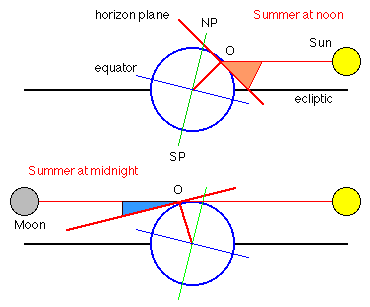
|
Summer
An observer is located at O in the northern
hemisphere (latitude 50°).
In the northern summer the north pole NP is
inclined towards the sun.
At noon the (red) elevation angle of the sun is:
90° - 50° + 23.5° =
63.5°
Details
and Details
(deutsch)
The orbit of the moon has only a small
inclination against the ecliptic plane (5.5°).
So the moon can be assumed to be in the ecliptic
plane of the sun.
Until midnight, the earth turned the observer by
180° to the opposite side. The elevation angle
for the full moon (blue) is:
90° - 50° - 23.5° =
16.5°
|
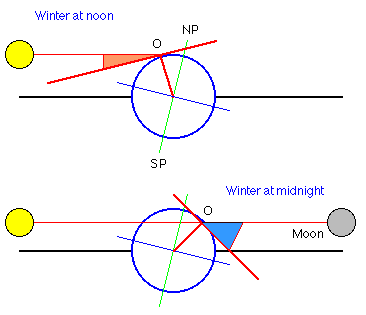
|
Winter
Half a year later (winter) the earth has moved
half around the sun in the ecliptic plane. As the
inclination of the earth's axis remains constant
the north pole is now away from the sun.
At noon the (red) elevation angle of the sun is:
90° - 50° - 23.5° =
16.5°
At midnight, the earth turned the observer by
180° to the opposite side. The elevation angle
for the full moon (blue) is:
90° - 50° + 23.5° =
63.5°
|
Download my applets:
Moon
Calendar
Moon
Phases

The Waxing Crescent
Moon
Location: Berlin at 51.5° N, 13.4° E.
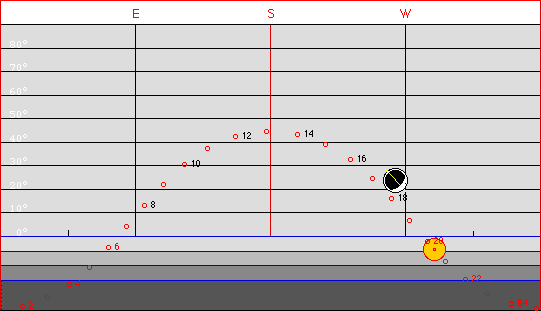
Spring (April 7, 2000) at 18:25 GMT, shortly after
sun set, the moon is quite high and inclined.
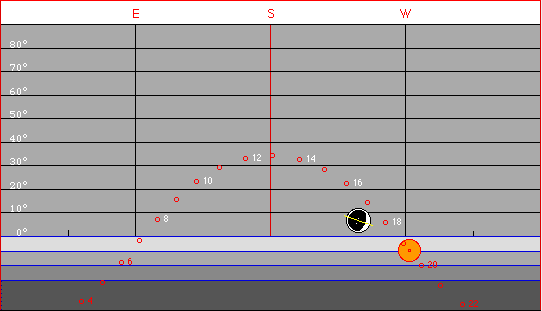
Autumn (September 30, 2000) at 18:25 GMT,
shortly after sun set, the moon is low and upright.
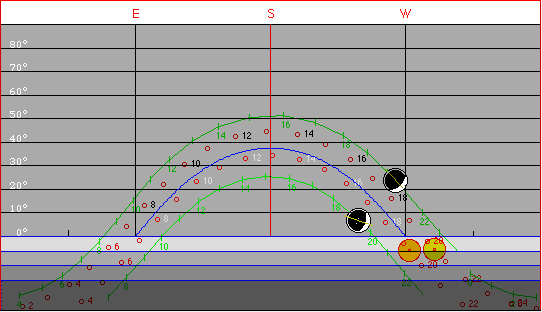
The overlay. The blue curve is the celestial equator.
Links:
Questions
on Moon-Sighting

back to "Sun, Moon & Earth
Applet"
|




